Key Takeaways:
-
Restaurant branding is more than visuals.
-
Consistency across touchpoints builds trust, recognition, and loyalty.
-
77% of diners check a restaurant’s website before visiting.
What makes diners choose one restaurant over another when both serve great food?
It’s rarely the menu alone. It’s the brand experience that shapes everything around it.
From your visual identity to how your staff welcomes guests, branding affects every touchpoint.
And in a competitive dining scene, getting it right is game-changing.
In this article, we’ll explore the core elements of restaurant branding that help you build recognition and long-term guest loyalty.
Brand Story
Every memorable restaurant brand begins with its brand story: the “why” behind the concept.
Before you think about visual identity, menu design, or your brand voice, your story is what sets the foundation for how diners perceive, connect with, and remember your brand.
Why does this matter?
Because your brand story expresses your mission, values, and purpose.
It tells guests what you stand for and why you exist.
In a crowded dining landscape, this factor helps you build your unique customer base, explains Morgan Hipworth, the founder of the Australian bakery Bistro Morgan.
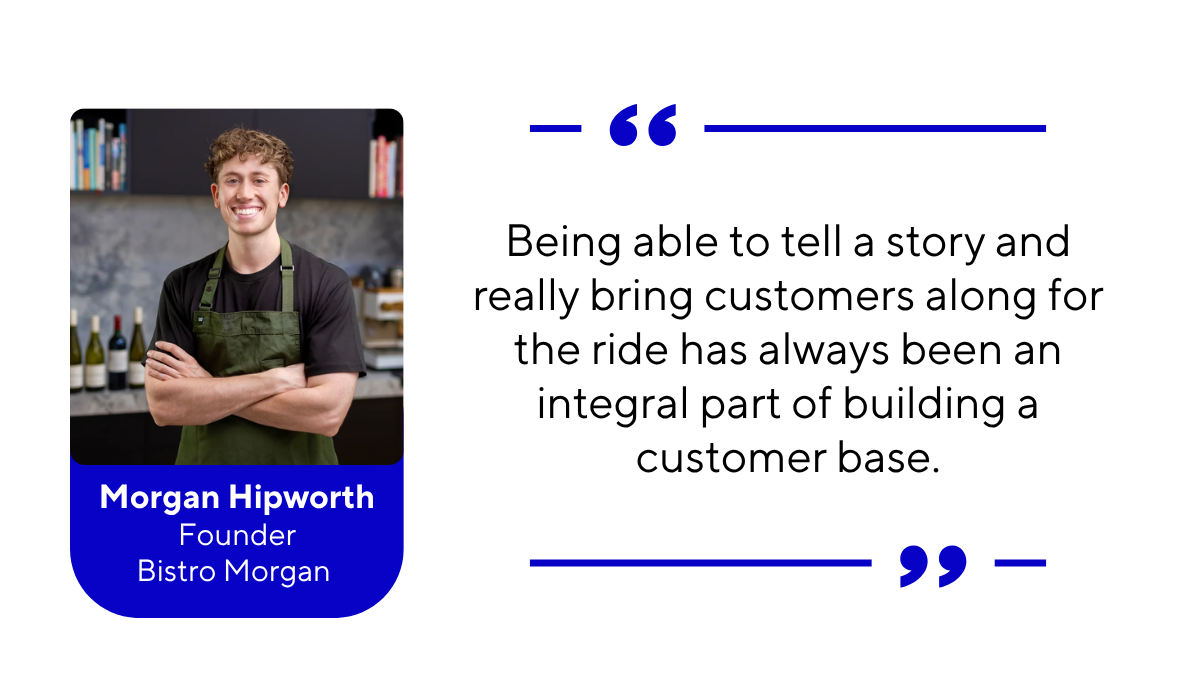
Illustration: Tablein / Quote: SquareSpace
And research supports what Morgan says.
According to a report by Headstream, 55% of consumers are more likely to purchase from a brand if they love its brand story.
A compelling brand story strengthens trust, emotional connection, and customer retention, which is essential for long-term loyalty.
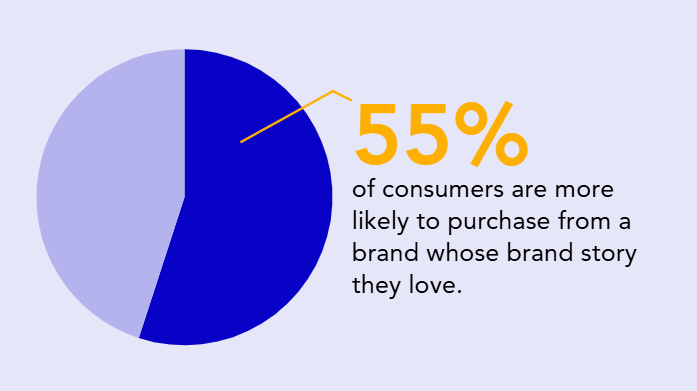
Illustration: Tablein / Data: Headstream
Yet this is where many restaurants miss the mark.
They focus on looking branded before actually being branded.
In reality, your brand story needs to be defined before you ever choose colors or craft your social media strategy.
To build a meaningful story, start with these three core elements:
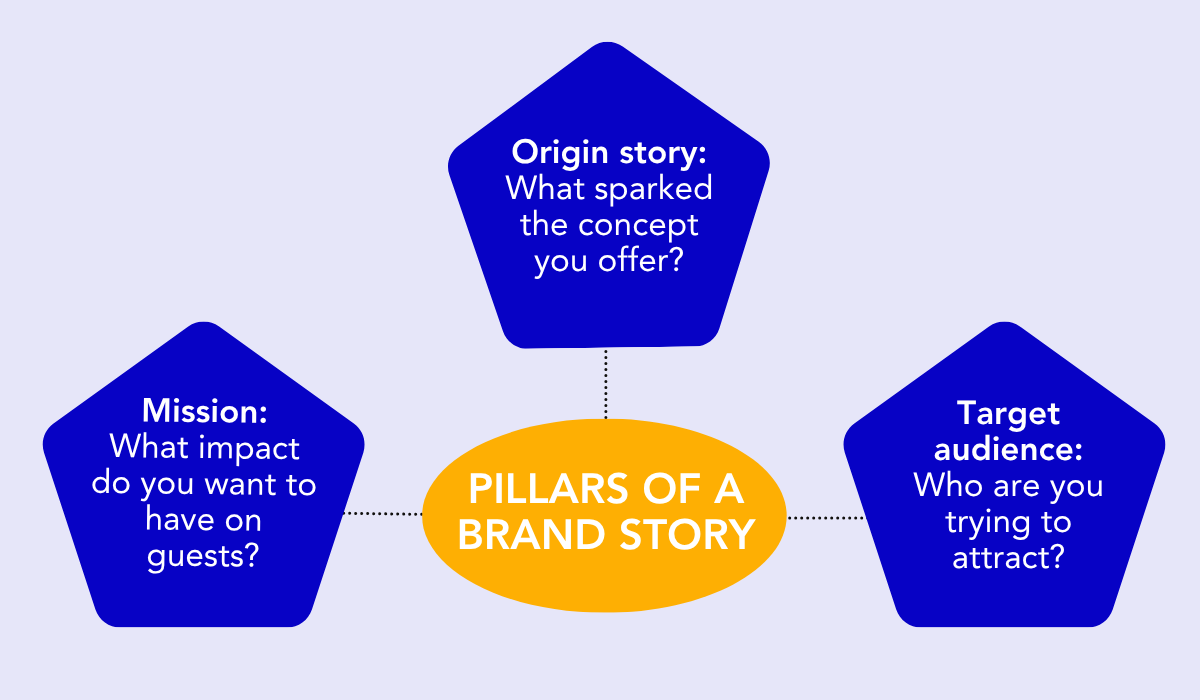
Source: Tablein
A powerful example of a brand story done right is Chipotle.
Their “Food with Integrity” philosophy communicates a clear mission around ethical sourcing and sustainability, and it’s echoed consistently across their website, as shown below.

Source: Chipotle
When crafted authentically, your brand story becomes the backbone of your restaurant's branding elements, influencing everything from menu descriptions to guest engagement and digital presence.
Now, let’s look at how visual identity supports your brand story.
Visual Identity
Your visual identity is the face of your restaurant.
It’s what guests recognize before tasting a single dish.
From your logo and color palette to typography and signage, every visual element shapes how customers perceive your brand.
Think about it: when diners see the same colors, typography, and logo used consistently across menus, uniforms, and digital branding, doesn’t it send a signal of professionalism and reliability?
This leads to high customer trust, which ultimately results in high revenue.
And there’s research to prove it.
According to Marq, maintaining a consistent visual branding can increase revenue by up to 23%.
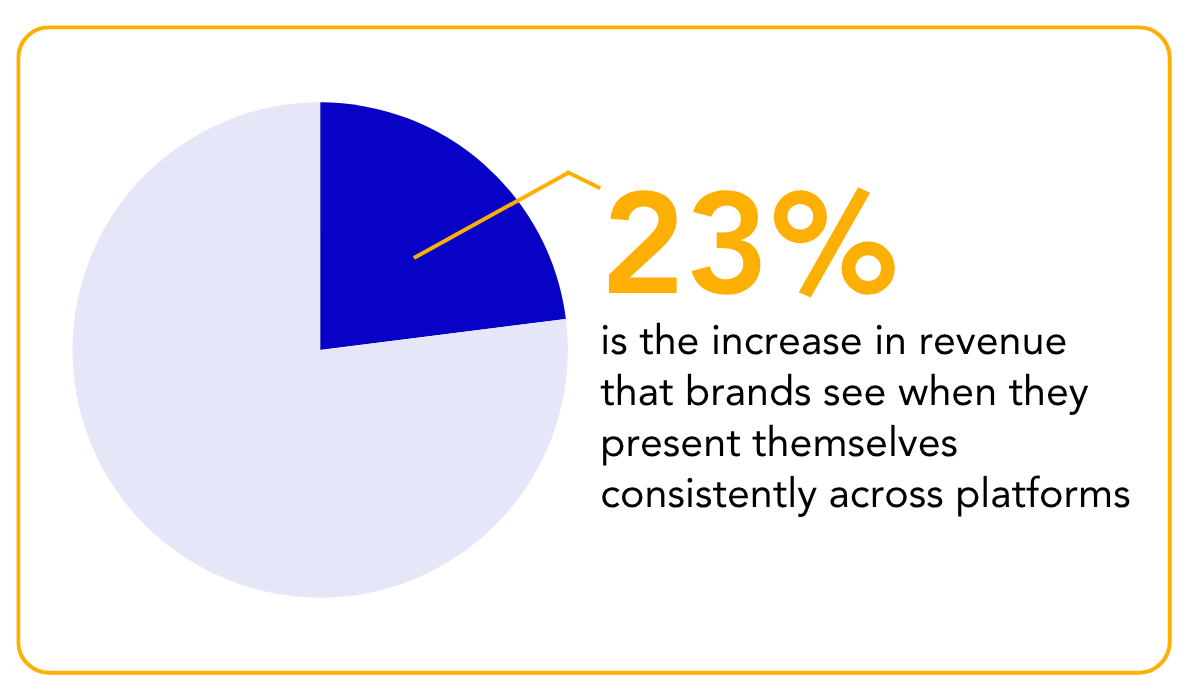
Illustration: Tablein / Data: Marq
For you as a restaurant owner, that consistency needs to stretch across every touchpoint.
Suppose you have a rustic bistro.
In that case, you’re better off with warm earth tones like yellow and olive green.
However, if you own a fine-dining place, elegant colors like jet black, deep purple, and navy blue are better suited.
The best way to understand this is through real-world examples of restaurants with great branding.
The iconic McDonald’s golden arches are a prime example of how color and shape foster recognition.
They evoke optimism and are globally recognized, even without the brand name.
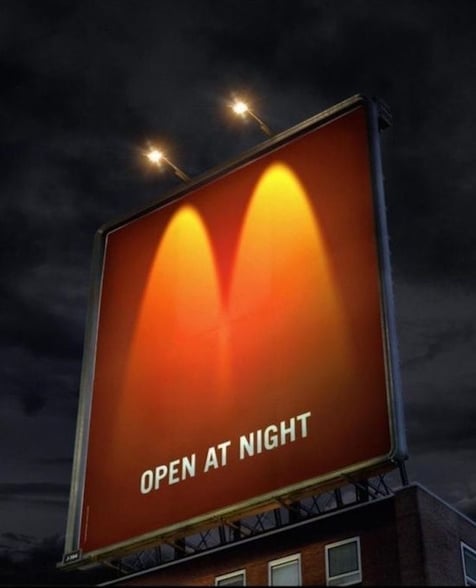
Source: Marketing Birds
Similarly, Starbucks uses a green palette to communicate calmness and sustainability, values at the heart of its brand personality.
Whether printed on a cup sleeve or shining on a storefront sign, that consistent green tone reinforces trust and connection with customers.
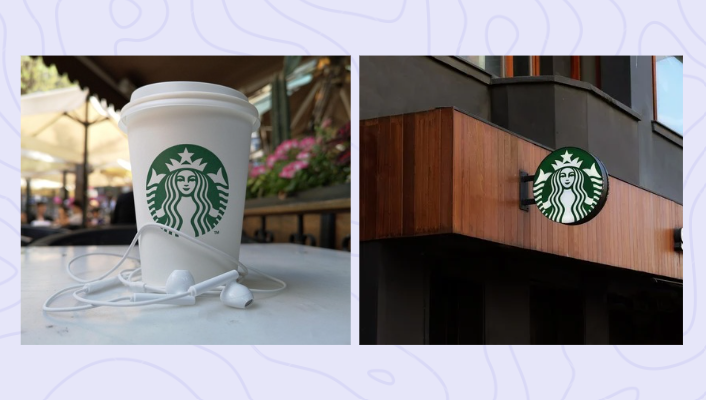
Pizza Hut also offers a powerful lesson in visual branding.
Its red roof logo, combined with its signature script typography, has remained one of the most recognizable visual identities in the fast-food world.
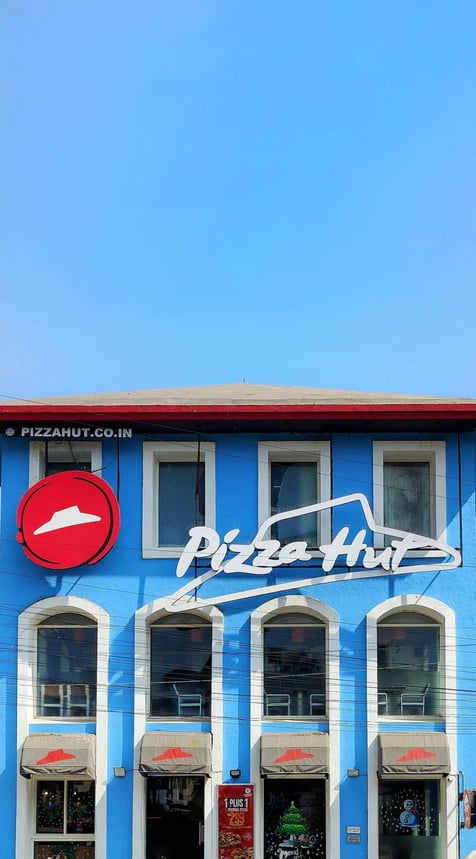
Source: Pexels
Even if the name “Pizza Hut” never appears on the box, that signature red roof is all it takes for customers to recognize exactly who made the pizza.
In essence, your restaurant’s visual branding will turn first-time strangers into brand advocates.
A visually consistent brand not only sparks recognition, but it also sets the stage for the next element of restaurant branding: your brand tone.
Brand Tone
The brand tone defines how your restaurant communicates, whether it’s friendly, witty, formal, adventurous, or sophisticated.
It’s the personality behind your words.
In simple terms, your brand tone gives your restaurants a “voice” that guests can relate to and remember.
A clear and consistent brand tone humanizes your business, helping diners connect with your story on an emotional level.
Just as a great server sets the vibe for the dining room, your brand tone sets the vibe for your brand.
And the impact is real.
According to data collected by Sprout Social, 57% of consumers will increase their spending when they feel connected to a brand.
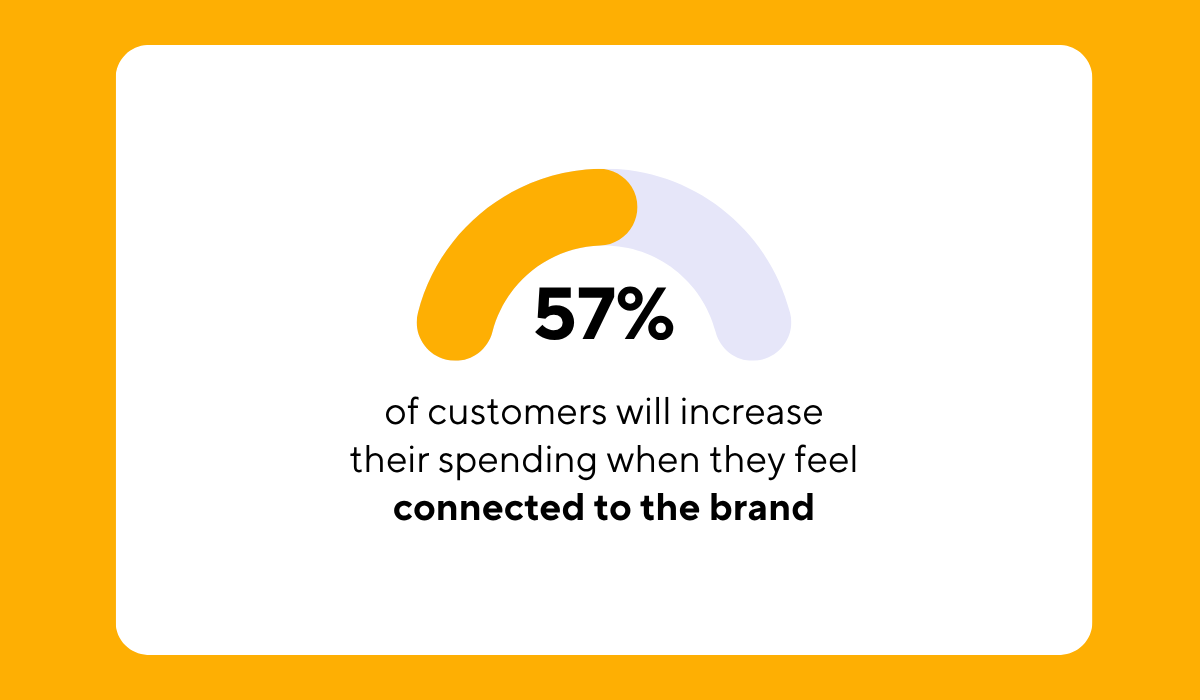
Illustration: Tablein / Data: Sprout Social
What does this tell us?
That consistency of tone across touchpoints builds trust and brand retention.
This tone should mirror your brand personality, cuisine, and target audience.
For example, a premium fine-dining restaurant may lean into refined, poetic language, while a fast-casual taco joint might embrace a playful, bold tone.
To maintain this alignment, you should create a short brand voice guide that outlines preferred vocabulary, phrases, humor level, and words to avoid.
This ensures brand consistency across FOH staff, marketing teams, and content creators.
A great example is Wendy’s. They’re famous for their playful and witty brand tone.

Source: Wendy’s
Their humor-driven engagement strategy turned them into a viral powerhouse on X as well, proving that personality can boost brand awareness and engagement dramatically.

Source: LinkedIn
On the opposite side of the tone spectrum, Chick-fil-A is known for its warm and polite voice, both online and in person.
Their tone reinforces hospitality and kindness, aligning with their family-friendly brand values.

Source: Chick-fil-A
Maintaining this consistency is key, especially as you grow your online presence.
As Kamal Azzouz, the Managing Partner at Urban Roast, notes:
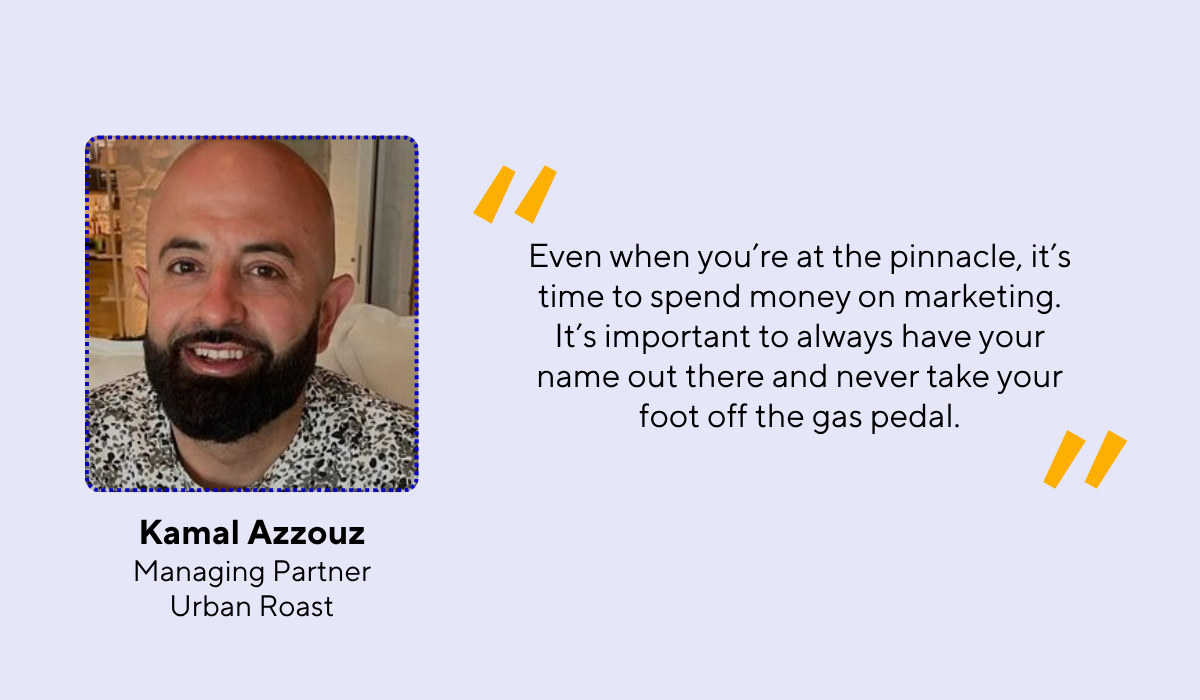
Illustration: Tablein / Data: Spot On
When your brand tone is consistent and aligns with your brand story, it creates a cohesive brand personality that diners instantly recognize.
Get this right, and your brand voice becomes as memorable as your signature dish.
Menu Design
Your restaurant’s menu is more than a list of dishes.
It’s a powerful branding tool that reflects your concept, value, and personality.
The way you design, word, and present your menu says as much about your brand as the food you serve.
Your menu should instantly communicate your brand identity through fonts, colors, layout, and menu item descriptions, because it directly influences customer behavior.
Research confirms this.
According to a study by Wansink, Painter, and Van Ittersum, using descriptive labels for menu items can increase sales by 27%.

Illustration: Tablein / Data: ResearchGate
With results like this, it’s clear: how you present the food matters just as much as the food itself.
But there’s more to menu design than an enticing description.
Readability, structure, and brand consistency play a big role, too.
If your restaurant is rustic and cozy, the menu should reflect the charm. On the other hand, if it’s modern and minimal, the menu should stay clean.
And if it’s fine-dining luxury, the menu should feel premium.
In other words, when a guest reads your menu, the experience should align with what they see, smell, and feel inside your dining room.
Here are some design tips that keep your menu on-brand:
-
Use a maximum of 2-3 brand fonts that mirror your visual identity.
-
Stick to your brand colors for headings, highlights, and pricing cues.
-
Write dish descriptions in your brand tone (witty, indulgent, or elegant).
-
Ensure the menu format complements your venue (e.g., leather-bound for premium dining and clipboard menus for casual cafes).
A standout example of interesting menu design comes from Augustin Batignolles in Paris.
Its menu uses refined typography, clean spacing, and illustrations of breakfast items on the borders.
All of this reflects the chic French bistro charm.

Source: UnderConsideration
The value of good menu design is also emphasized by Gregg Rapp, a menu engineer with over 30 years of experience.
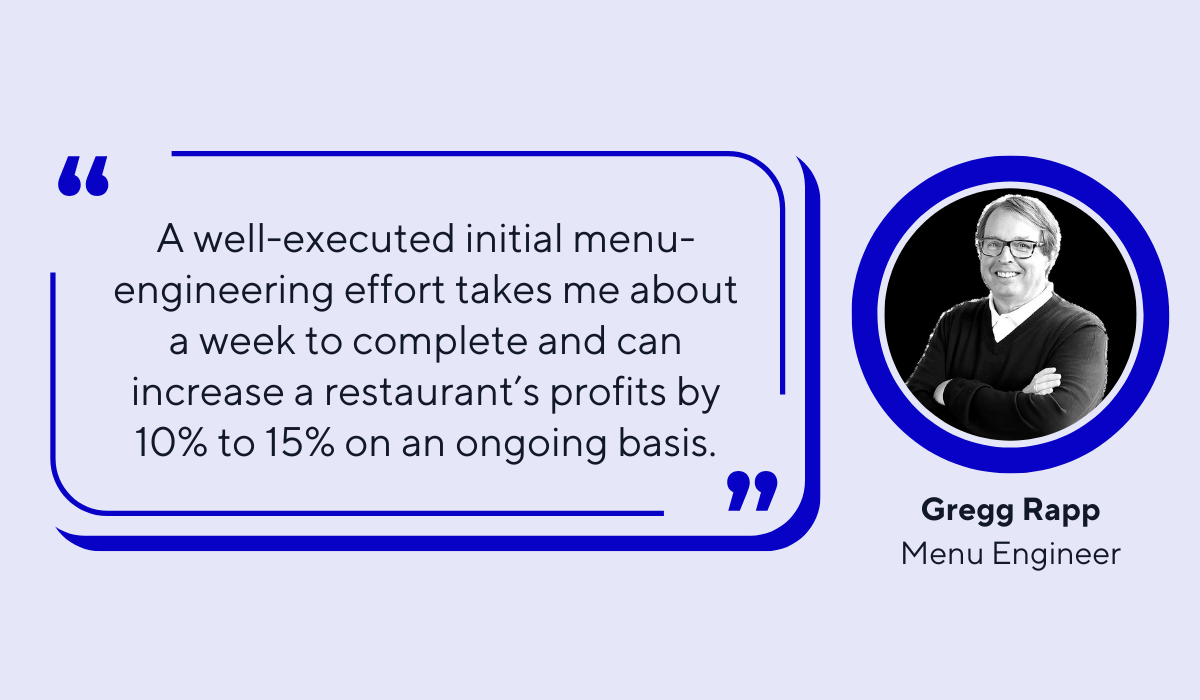
Illustration: Tablein / Data: Menu Cover Depot
In a nutshell, when your menu walks the talk of your brand, it becomes an extension of the dining experience, not just a price list.
Interior Design
A restaurant’s interior design is one of the most tangible expressions of its brand identity.
From the moment a guest walks through the door, the layout, lighting, furniture, scent, and overall atmosphere communicate your concept before the food arrives at the table.
It influences perceived value, customer satisfaction, and even how long guests stay.
According to a study by Mood Media, 84% of U.S. consumers would return to a store with a pleasant atmosphere—proof that interior design impacts guest loyalty.
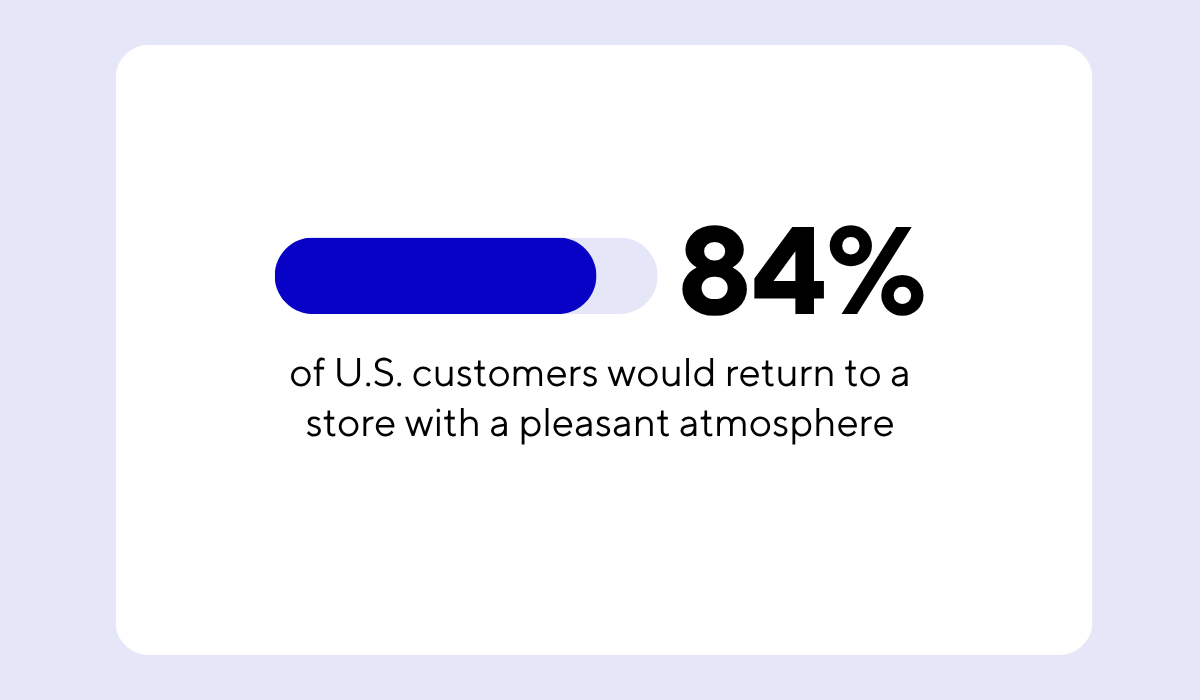
Illustration: Tablein / Data: Mood Media
But not just any interior design is going to work.
It should reflect your restaurant’s brand personality, price point, and target audience.
Think of it as a physical extension of your brand story.
If you want your interior to stay on brand, focus on:
-
Matching the color palette of the interior to your overall visual identity
-
Using lighting intentionally (e.g., dim & warm for fine dining and bright & energetic for casual cafes).
-
Ensuring furniture, tableware, and decor reinforce the brand identity.
-
Integrating storytelling through wall art, signage, or open-kitchen layouts.
So many restaurants around the world have nailed this part of restaurant branding.
Nobu, for example, is a minimalist Japanese-inspired place with elegant lighting. It communicates exclusivity and premium dining.
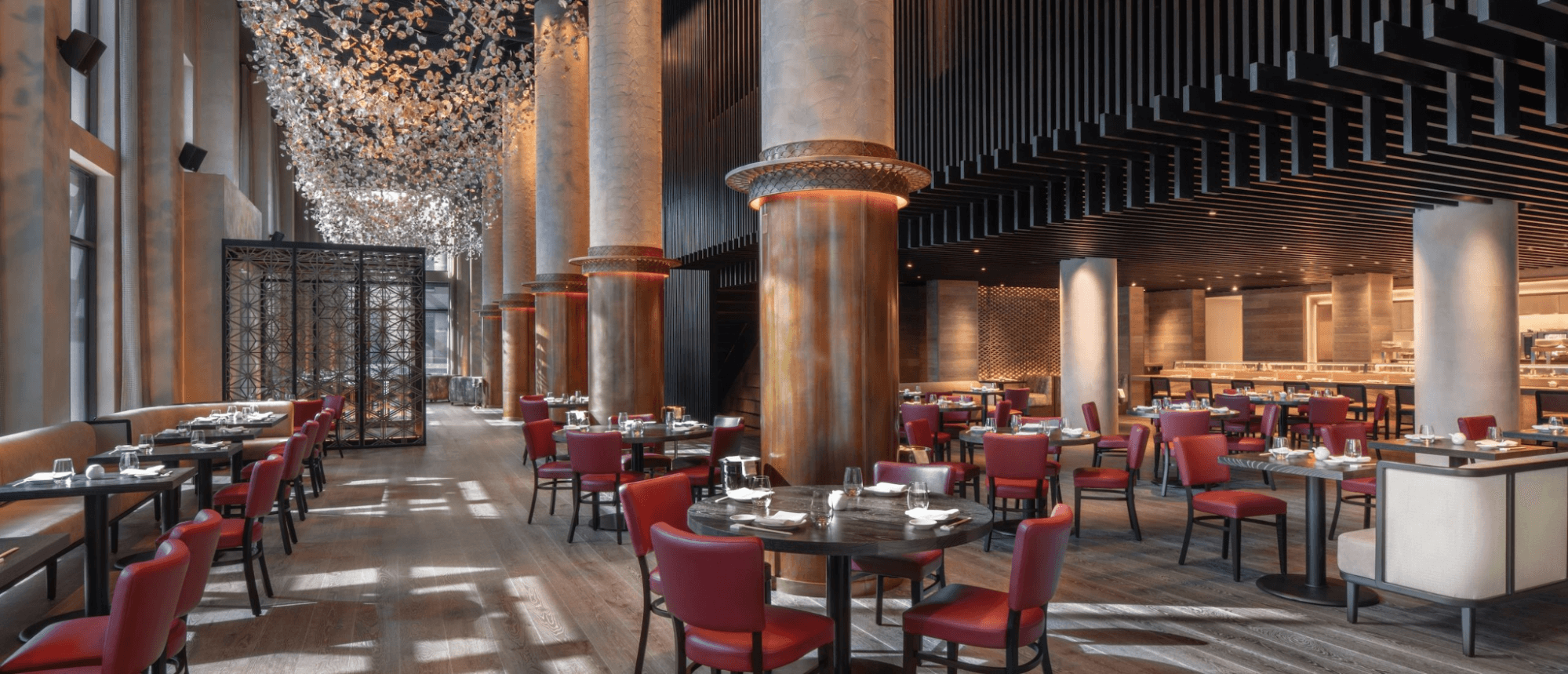
Source: Nobu
The decor is intentionally understated yet refined, reinforcing Nobu’s brand persona of sophistication and luxury.

Source: Frame
This is one big reason why their customers love them so much, as shown by this review of one of their diners:

Source: TripAdvisor
Another example comes from Sweetgreen, which brings its mission of clean eating and sustainability to life through interior design.
Their locations feature natural materials, neutral palettes, greenery, and community-centric seating to reinforce their brand values of health and environmental consciousness.
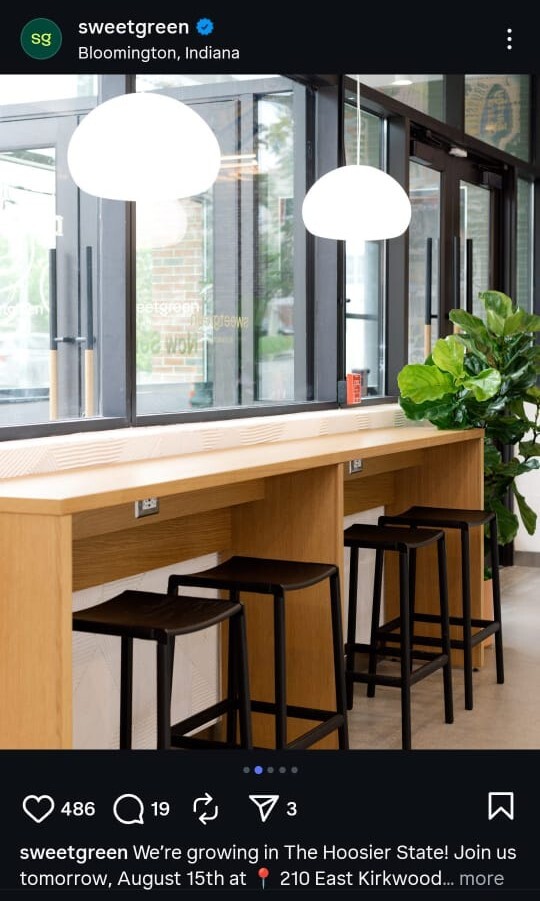
Source: Sweetgreen on Instagram
To sum it up, when your interior design matches your brand story, it transforms your space into a memorable experience guests carry with them long after the last plate is cleared.
Service Style
Guests don’t only remember what they ate but also how your team made them feel.
Brand identity isn’t something you print on menus or hang on your walls. It needs to be lived and experienced through every interaction.
And if it’s positive, guests become loyal.
According to a Deloitte survey, 60% of guests would visit a restaurant more often if they had a positive dining experience at it.
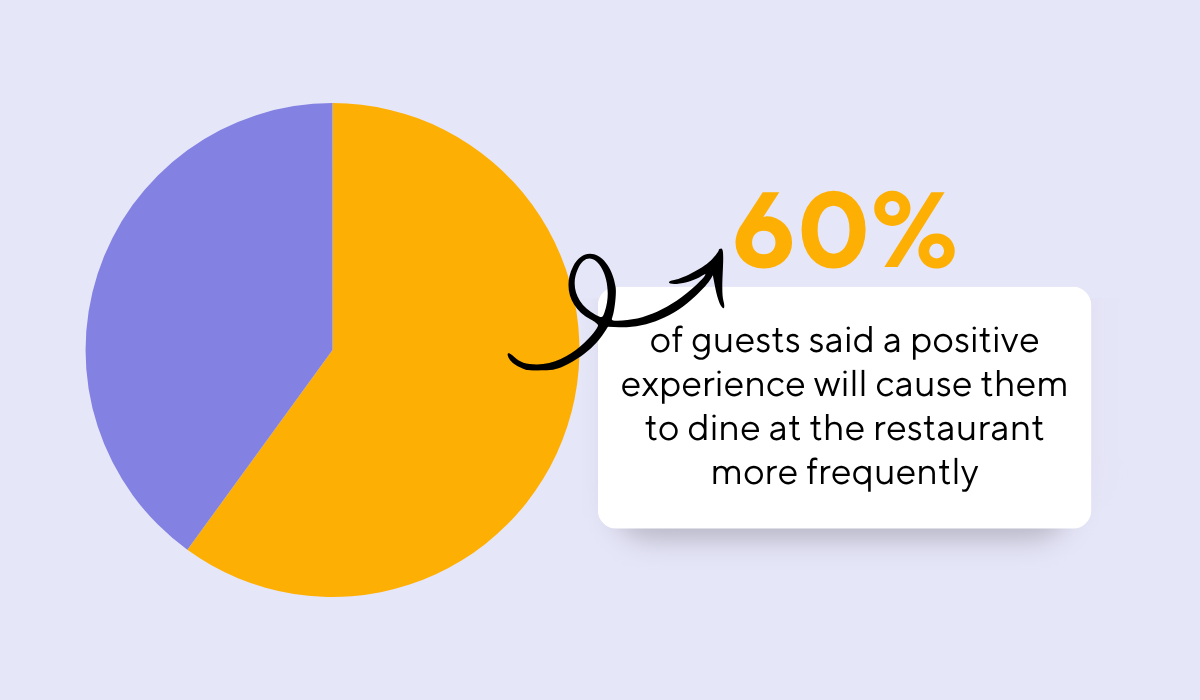
Illustration: Tablein / Data: Deloitte
One thing is clear: your service style needs to be top-notch and match your brand’s personality, whether it’s warm and family-friendly or refined and polished.
So, where do you start?
With your front-of-house team, because they’re your brand ambassadors.
Their greeting style, tone of voice, uniform, and approach to upselling should mirror the brand values you promote online and in your marketing.
A good example of service-driven branding is Chick-fil-A.
Their polite service, including the signature “My pleasure,” reinforces a caring, family-oriented brand that people associate with warmth and respect.
And real customer experiences prove this.
Reddit threads are full of guests sharing stories of how Chick-fil-A staff go above and beyond to deliver genuine hospitality and are highly trained.

Source: Reddit
Or take a look at Texas Roadhouse, known for their engaging service style.
Servers connect with diners through friendly banter and a lively atmosphere that matches their brand’s country-style identity.
Guests often rave about their service, including reviews like the one below.

Source: Facebook
When your service style aligns with your brand values, it creates a dining experience guests can feel—one that turns visitors into regulars and regulars into advocates.
Online Presence
Maintaining a strong online presence for branding is non-negotiable.
Why?
Because, for most diners today, your restaurant’s brand isn’t discovered at the door.
It’s discovered online first.
Before guests taste your food, admire your interior, or interact with your staff, they’ve formed an opinion based on your website, social media, and online reviews.
The importance of a strong online presence is clear: an MGH survey found that 77% of diners check a restaurant’s website before visiting.

Illustration: Tablein / Data: MGH
With that many people interacting with your brand online prior to stepping inside, having mismatched visuals, tone, or messaging across platforms is the last thing you want.
If your Instagram shows one vibe, your website another, and your in-person experience tells a different story altogether, guests become confused.
And confused diners rarely come back.
This misalignment can break trust fast, especially when more than 50% of consumers try restaurants because of social media.
The good news?
With the right restaurant branding tools, these issues are completely avoidable.
Free and easy-to-use design platforms like Canva help you design catchy graphics, scheduling tools like Buffer support consistent social media posting, and analytics platforms ensure your content strategy stays on track.
And for your guest journey, tools like Tablein’s customizable booking widget can save the day.
Tablein is more than just a table booking software that helps your staff manage reservations faster and your guests secure a table in seconds.
It also enables you to match the appearance of the booking widget to your overall brand identity.

Source: Tablein
This way, guests get a consistent brand experience online that mirrors what they’ll see inside your restaurant.
And if you need proof that consistency works, take a look at Shake Shack.
They nail brand alignment by using the same brand colors, playful tone, and vibrant visuals across all their digital channels.
Below, you can see their friendly copy style on the website:

Source: Shake Shack
And then the same applied to one of their Instagram posts:
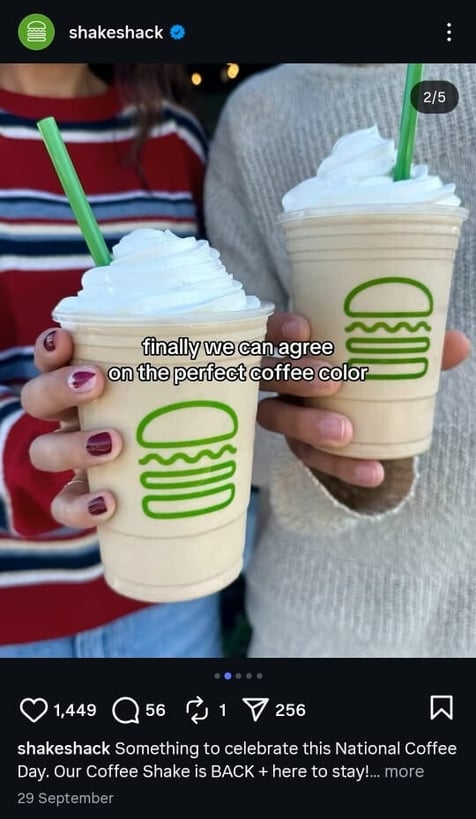
Source: Shake Shack on Instagram
That’s consistency.
By making your online presence cohesive and on-brand, you not only attract more diners but also create familiarity, trust, and a seamless booking experience that converts clicks into seated guests.
Conclusion
By now, you’ve seen that strong restaurant branding is more than just a great logo and a catchy tagline.
It’s about creating a cohesive experience from the story you tell and the visuals you use to the service you deliver and the presence you maintain.
When all these elements work in harmony, your restaurant becomes a brand guests recognize and return to.
Get a 30-day Exclusive Trial
As a Tablein blog reader, you’re eligible for an exclusive 30-day free trial to experience our simple reservation solution for your restaurant.
Enter your business email, and we’ll send you all the steps needed to create your account.